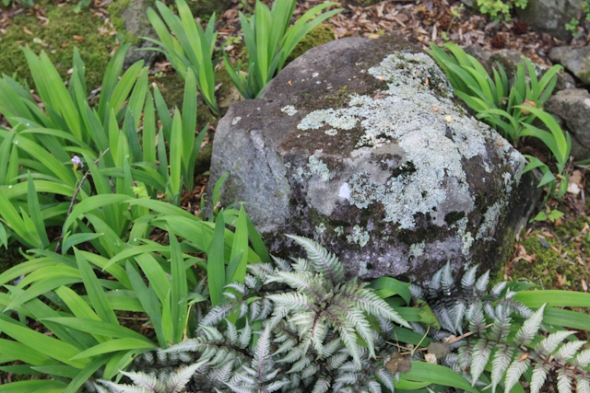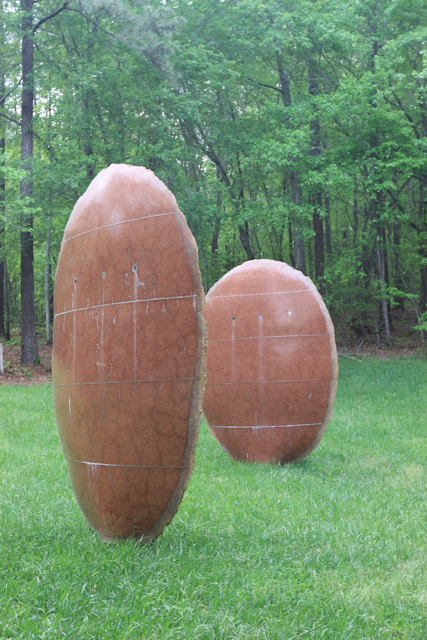My friends Marty and Alan cultivate a serene woodland garden that perfectly complements their modern home.
An ebullient Virginia fringe tree welcomes visitors.
Wide paths draw guests to restful seating areas behind the house.
A Japanese aesthetic informs the design, with subtle plantings merging into the surrounding woodland.
From the back deck, the space opens to a wide lawn punctuated by more works of Thomas Sayre.
A board walk echoing the planes of the house leads to a clearing in the woods.
A bird feeder signifies communion with nature reinforced by appreciation of native plants.
A modern steel arc bridges a dry streambed.
Harmonious woodland vignettes embody the essence of this superb garden — appearing effortless, but in reality the result of careful selection and placement of plants and objects to create an elegant design. Nothing competes for attention, the fresh spring growth of similar shapes but contrasting colors dances around the ancient rock cloaked in moss and lichen that anchors the composition. Old and young, weathered and new, the grouping is a natural poem of time and the seasons.
Another scene speaks to the life cycle in the garden, with a slowly decaying tree nurturing a succession of understory growth. Native and exotic plants weave together, sharing the space and resources — an exemplary metaphor for ideal human relationships.
Alan Armitage, Vinnie Simeone, Alan and Marty at Senso-ji, Tokyo, October 2011.













